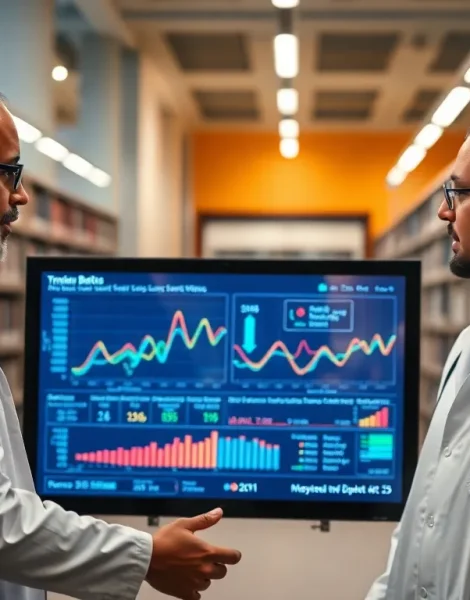In a world overflowing with data, imagine having a magic portal where all your research and resources are just a click away. That’s the charm of open archive systems. They’re like the friendly librarian who knows exactly where to find that obscure paper you need, minus the shushing.
Table of Contents
ToggleOverview of Open Archive Systems
Open archive systems enable seamless access to academic research and resources. These platforms promote the free exchange of scholarly content, enhancing visibility for research works. Users find an extensive range of materials, from articles to datasets, all in one place.
Many open archive systems employ standardized protocols for metadata and organization. OAI-PMH, or Open Archives Initiative Protocol for Metadata Harvesting, plays a crucial role in achieving interoperability between different archives. This protocol allows repositories to share their metadata, ensuring wider access to numerous collections.
Institutions and authors benefit significantly from these systems. They can increase the reach of their research and foster collaboration among scholars. Open archives encourage the use of open access publishing, which reduces barriers to information dissemination.
Researchers enjoy benefits such as improved citations and enhanced discoverability of their work. Statistics show that papers in open archives receive more views and citations than those behind paywalls. Providing immediate access to research contributes to advancing knowledge across various fields.
Key examples of open archive systems include arXiv, PubMed Central, and the Social Science Research Network. Each archive focuses on specific disciplines, making it easier for researchers to find relevant studies. These platforms continue to evolve, adapting to the needs of the global research community.
Open archive systems exemplify a commitment to sharing knowledge freely. Research developments thrive in an environment where information is accessible and readily available. Users appreciate the simplicity of navigation and the efficiency of retrieving desired content.
Benefits of Open Archive Systems

Open archive systems offer numerous advantages for researchers and institutions. These benefits are evident in areas like accessibility and collaboration.
Improved Accessibility
Open archive systems enhance accessibility to academic research. Users can easily reach a variety of materials, including articles and datasets, without encountering paywalls. The use of standardized protocols, such as OAI-PMH, ensures these systems connect seamlessly with various archives. Consequently, researchers access resources quickly, saving time and effort in their search. Open archives contribute to a more egalitarian access model, making knowledge available to a broader audience. As a result, individuals from underfunded institutions gain the same access to information as those from well-funded organizations.
Enhanced Collaboration
Collaboration flourishes in open archive systems. Researchers from different disciplines share findings more effectively, breaking down traditional silos. These systems promote open access publishing, which encourages scholars to disseminate their work without barriers. When researchers share their work openly, it invites feedback and partnerships, leading to innovation. Furthermore, collaborative projects often result in higher citation rates for published works. Various disciplines benefit from cross-pollination of ideas, driving the advancement of knowledge in diverse fields.
Challenges in Implementing Open Archive Systems
Implementing open archive systems presents several challenges that need careful consideration. Technical hurdles and institutional support play crucial roles in the success of these systems.
Technical Considerations
Technical challenges often arise during system integration. Different formats and standards complicate interoperability, making data sharing difficult. Many open archive systems depend on the Open Archives Initiative Protocol for Metadata Harvesting (OAI-PMH) to streamline these processes. Ensuring consistent metadata quality remains critical, as inaccurate data negatively impacts user experience. Security issues related to data protection must also be addressed to maintain users’ trust in the system. Ultimately, robust technical infrastructure is essential for the long-term sustainability of open archives.
Institutional Support
Institutional support significantly affects the successful implementation of open archive systems. Resources for training and promoting these platforms are vital for user adoption. Many institutions must develop clear policies that endorse open access practices and address copyright concerns. Encouraging faculty and researchers to participate actively can enhance the system’s visibility. Strong leadership commitment can foster a culture of sharing and collaboration across disciplines. Institutions need to prioritize ongoing professional development to ensure successful implementation.
Case Studies of Successful Open Archive Systems
Various successful open archive systems demonstrate the effectiveness of this model in promoting accessibility to research. arXiv serves as a leading example in the fields of physics, mathematics, and computer science. It allows researchers to share preprints, resulting in over 1.8 million submissions since its establishment in 1991. This platform facilitates rapid dissemination of findings, giving immediate visibility to new concepts and experiments.
PubMed Central focuses on life sciences and biomedical research. It offers free access to a vast collection of articles, with over 5 million articles available. Researchers benefit from increased visibility and improved citation rates. Statistics reveal that works published in this repository achieve higher engagement compared to those in traditional journals.
Social Science Research Network (SSRN) specializes in social sciences and humanities. With over 1.3 million papers on its platform, SSRN promotes peer sharing and collaboration. Researchers appreciate the collaborative tools that enable effective networking and feedback, which leads to innovative partnerships.
Each system illustrates unique strengths while contributing to the broader mission of enhancing knowledge sharing. They utilize standards like OAI-PMH to ensure data interoperability, making it easier for users to navigate multiple repositories.
Challenges exist, as these systems encounter technical integration and metadata quality issues. Users often express concerns about data security and privacy. Institutional support greatly influences adoption rates, making it crucial for organizations to champion open access initiatives.
Commitment to ongoing professional development and training plays a significant role in successful implementation. Collaborative efforts among authors, institutions, and users foster an environment where innovation thrives, ultimately benefiting the global research community.
Future Trends in Open Archive Systems
Open archive systems are evolving to meet the changing landscape of research and scholarship. Adoption of artificial intelligence tools enhances search capabilities, allowing users to find relevant content quickly and effectively. Integrating machine learning algorithms can provide personalized recommendations, streamlining research processes for users.
Collaboration is becoming more vital as researchers seek interdisciplinary approaches. Increased focus on community-driven content curation empowers users to contribute to repositories, enriching the breadth of available resources and fostering engagement among scholars. The emphasis on user-generated content can enhance the diversity of perspectives within open archives.
Blockchain technology offers potential solutions for data security and integrity. Implementing blockchain can establish immutable records of research outputs, building trust among users while ensuring compliance with regulations. This technology may serve as a safeguard against data tampering and unauthorized access.
Emerging metrics for evaluating impact are shaping how research is assessed. Traditional citation counts are giving way to alternative metrics that recognize broader engagement indicators, such as downloads, views, and social media interactions. These metrics can provide a more comprehensive understanding of research influence.
Global collaborations and partnerships are on the rise. Initiatives among institutions, publishers, and organizations aim to create sustainable open archive frameworks, making content accessible to diverse audiences worldwide. Strategic alliances can result in expanded resource sharing and improved access for underrepresented communities.
User experience remains a priority as systems become more sophisticated. Optimizing intuitive interfaces and enhancing usability ensures that researchers can navigate archives seamlessly. User feedback mechanisms can drive continuous improvement, addressing concerns promptly and adapting to the evolving needs of the community.
Open archive systems represent a significant shift in how research is accessed and shared. They empower researchers and institutions by breaking down barriers and promoting a culture of collaboration. The benefits of increased visibility and accessibility foster an environment where knowledge can flourish.
As technology continues to evolve, these systems will likely integrate advanced tools to enhance user experience and data security. The commitment to open access and collaborative practices will be crucial for overcoming existing challenges. By embracing these innovative approaches, the research community can ensure that valuable insights remain accessible to all, paving the way for future discoveries and advancements.








